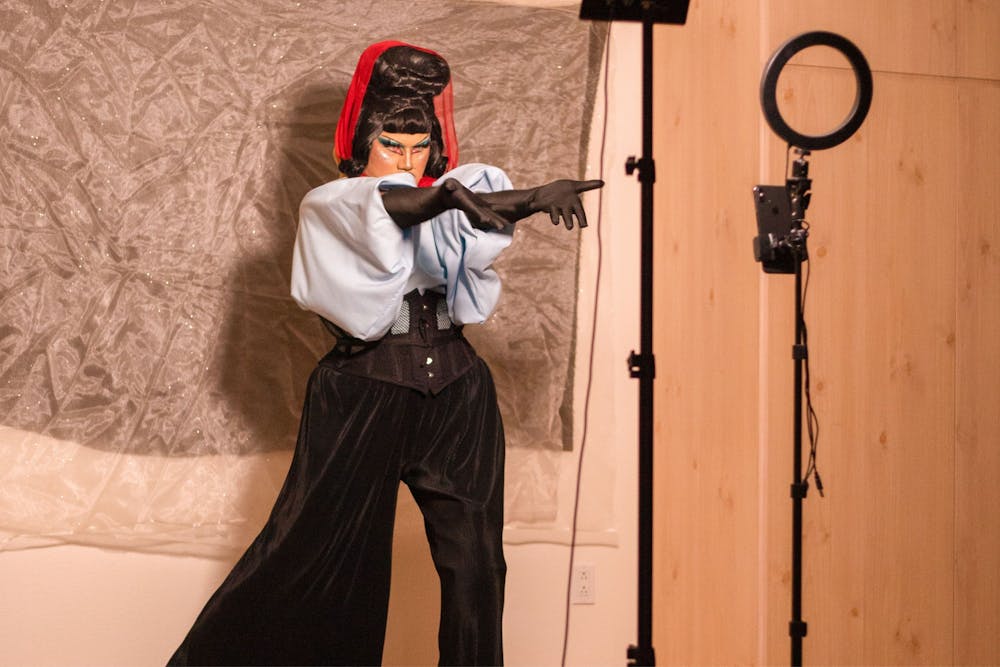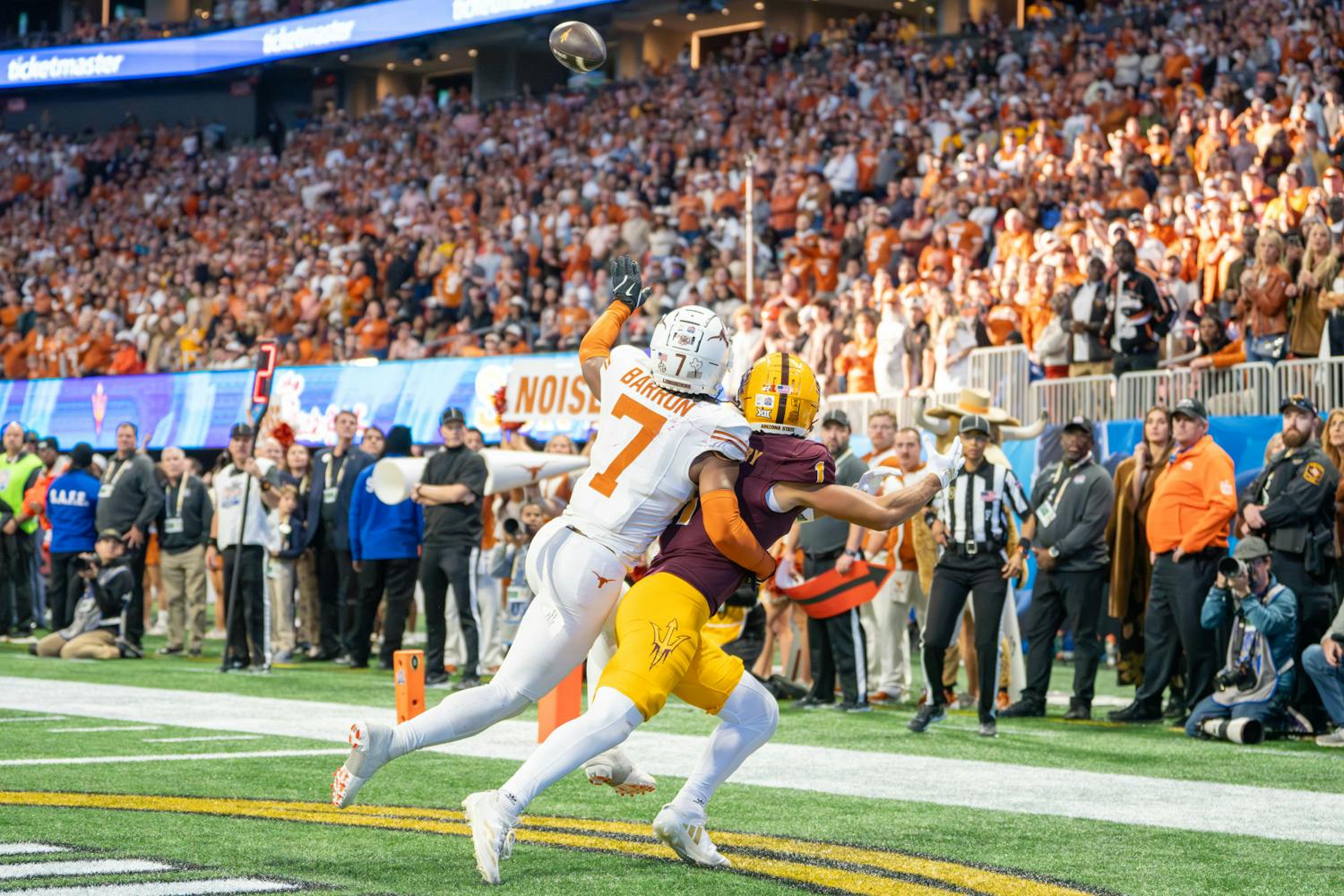Performers like Dahlia turned to other outlets to perform their art amid the pandemic. What used to transpire on stage in front of a screaming audience of LGBTQ fans and drunk bachelorettes has become a fully digital experience, with drag artists performing in their own homes on platforms such as Instagram live.
Dahlia, a senior studying theatre, has been doing drag for just over two years. Her debut performance at ASU’s Arcadia Pride show in 2018, which she volunteered to host, shot her into the local drag scene.
Despite the coronavirus pandemic shutting down bars and clubs across the country, Dahlia found notable success online with digital drag.
“I applied, and two or three weeks later I didn't hear anything back… next thing you know, I got a DM from Yonkers Pride saying, ‘Hello, we'd like to congratulate you on being our first finalist,’” Dahlia said.
Dahlia’s participation in the event consisted of two prerecorded performances and a question and answer segment.
“I competed to be the finalist against a Yonkers native and also a queen from all the way in London. I was victorious and crowned Queen of Yonkers,” Dahlia said.
Local Queens, Nationwide Show
While Dahlia has performed in a multitude of digital drag shows, other drag artists have turned to hosting their own. Phoenix locals Burandy J. Wine, Pyra Addiction and Rosie Cheeks (Erik Salazar, Mario Schurz and Steven Juniel respectively), started their own digital drag show hosted on Instagram live.
“It honestly started out just a random night. Pyra, Rosie and I decided just to get on live and just mess around and get into drag,” Wine said.
Started just for fun, drag on Instagram live quickly became a way to make extra money on the side.
“We were just lip-syncing, doing our makeup, then people commented ‘put your Venmo, put your CashApp,’” Addiction said.
From there, the queens decided to make it a weekly event. The show, titled Inferno, has gone live every Thursday for the last three months and has hosted over 100 drag performers to date from all across the U.S. The queens have found that digital drag shows opened up a whole new medium for creativity.
The queens give their guests the opportunity to perform live or prerecorded and have been amazed by the talent they have seen. From live vocals to fully choreographed dance numbers, their show has it all.
“I feel like it gives more of an opportunity to host people that (shows) couldn't normally host,” Addiction said, citing booking barriers such as money or time.
The Inferno queens noted that their show is currently only a supplemental income, and has proven to be more about the performance than the money.
“Of course we all want it to be more, but whatever we can get we are happy with because just being able to put our art out there and perform, it does something to you,” Cheeks said.
Drag In a Post-Drag Race World
With the rise in popularity of RuPaul’s Drag Race, the drag community has seen a lot of changes. The queens who appeared on the show have risen to superstar status, and many of them boast more than a million followers on Instagram. Local queens have noted the pros and cons of RPDR’s move into the limelight.
“It's really good that it's going into the mainstream because it allows girls to have more opportunities,” Addiction said in reference to queens who have started makeup lines, released albums or launched acting careers.
On the other hand, the Inferno queens pointed out that local queens are often left by the wayside.
“Any bar that would host a Ru girl, or any other popular elite queen, after that person performs and is out of the building, so are the people. It's almost like a ‘f--- you’ to the rest of the local performers,” Wine said.
Digital drag is no escape from this elitism. Many of the biggest shows are hosted by queens who competed on a drag television show, such as Trinity the Tuck’s new competition sponsored by Twitch. Wine feels that local queens and shows are not given the same chance that more “elite” queens are given.
“I feel like if we were to have an opportunity to be in or be watched like some of these shows, then maybe our tips could be higher,” Wine said.
Addiction acknowledged that RPDR set a new standard for local queens that is often less than attainable.
“When people just see Drag Race, they see these polished queens because of the standard that Drag Race has created throughout the seasons. They don't understand what it took them to get there, or how they started out,” Addiction said. “They just see what is on TV and expect it to be there as soon as they hear the word ‘drag.’”
Cheeks noted that the major difference between local queens and “elite” queens isn’t talent. It’s money.
“I can still do all the same things they do, just because I don't have as much money doesn't mean I'm not as good,” Cheeks said.
Dahlia expressed distaste for the way elitism has divided the drag community.
“Drag, in essence, was to bring people together. And as we see in society, we always end up finding a way to categorize a greater umbrella of a community,” Dahlia said.
Online platforms opened up a lot of opportunities for drag performers, but they also opened up opportunities for fans to express their thoughts more openly, especially in relation to the “new standard of drag.” Wine pointed out that everyone's a critic nowadays.
“You’re not Michelle Visage, you’re not RuPaul, why are you judging me?” Wine said. “You're not doing drag, you don't get padded, you don't tuck, it's just like, all of a sudden everybody's a judge.”
While this standard of drag is being applied universally, it is certainly not all-encompassing. All of the queens expressed a desire for RPDR to do a better job of casting all types of drag performers, not just cis-male queens. Historically, any trans women cast on the show were cast under the pretense that they were cis-men, or came out after the show and were asked to return.
“There're so many performers that I personally know who are trans, who are (drag) kings who I've never seen anybody do anything like them, and the fact that they don't have a platform to go to that is so mainstream as drag race is disappointing,” Cheeks said. “If Drag Race had (diverse casting) I think the competition would get even harder because you have so many talented people who are from such different areas.”
The Inferno queens partly attributed the lack of representation on RPDR to the commodification of queer culture.
“(Drag Race) may feel like their customers will not be happy with supporting a product if they support somebody who is trans or a drag king,” Addiction said. “I just feel like they're just trying to basically save a company and make sure that they keep their pockets full.”
Wine feels like there is some level of exploitation.
“It's very frustrating that big companies take the little that we have and then exploit it to make it bigger for their pockets, not our pockets,” Wine said. “In a sense, they're pretty much using queer culture for money.”
Digital drag shows have provided a platform for all types of drag artists to excel, not just cis-male performers. The Inferno show welcomes all types of drag performers.
“We encourage anyone to do anything,” Cheeks said.
Reach the reporter at gmstanle@asu.edu or follow @garrettstanleyy on Twitter.
Like State Press Magazine on Facebook and follow @statepressmag on Twitter.




